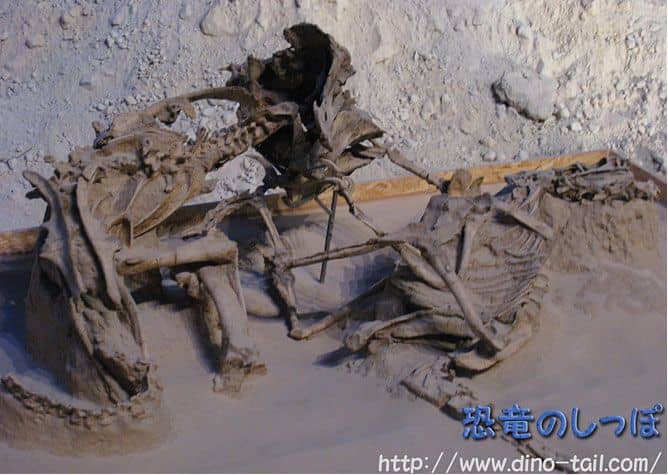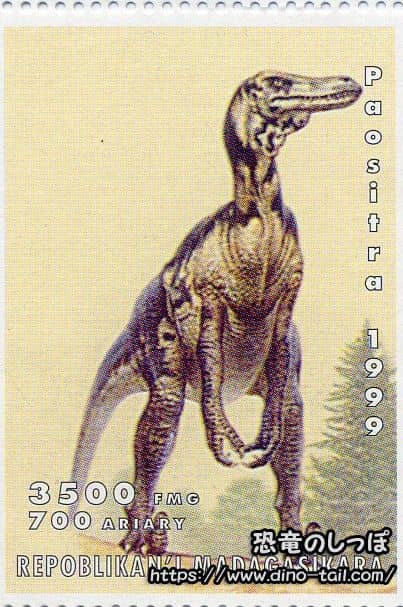About Velociraptor
| Scientific Name (Genus) | Velociraptor |
| Meaning of Name |
Swift thief
velox (swift) [Latin] - raptor (thief) [Latin] |
| Classification | Saurischia, Theropoda (Dromaeosauridae) |
| Total Length | Approx. 2m |
| Diet | Carnivorous |
| Period | Late Cretaceous |
| Sub-classification/Species |
Velociraptor mongoliensis
Velociraptor osmolskae |
| Year of Paper Publication | 1924 |
| Publication |
Three new Theropoda, Protoceratops zone, central Mongolia.
American Museum Novitates. 144: 1–12. by Osborn, Henry F. 1924. |
Features
Velociraptor's jaw was slender, and its structure suggests it could open its mouth wide.
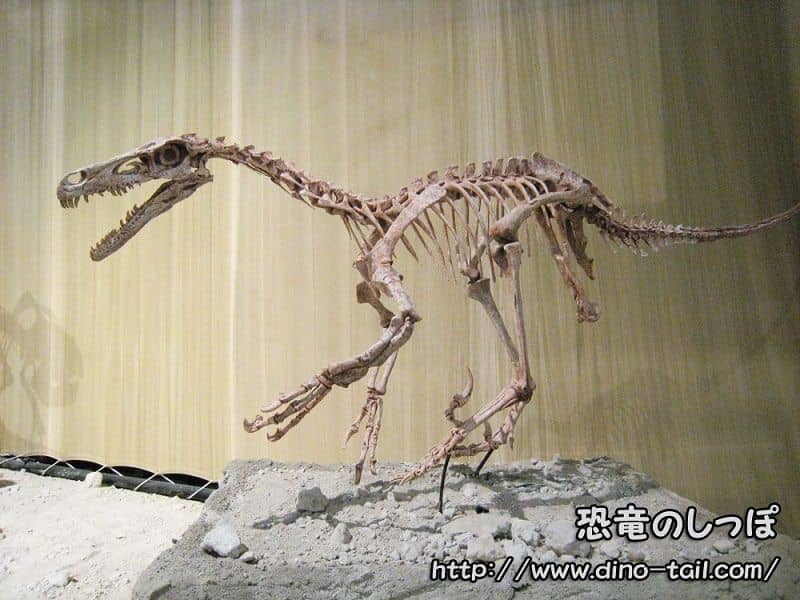
Its bones were lightweight, and it is thought to have been able to move quickly. Some estimates suggest it could run at speeds of 60 km/h.
Velociraptor became world-famous thanks to the 1993 movie "Jurassic Park." However, the large, intelligent "raptors" depicted in the movie, which were bigger than humans, were
actually modeled after its larger relative, Deinonychus, not Velociraptor.
The original author, Michael Crichton, adopted a scientific theory (now refuted) that considered Deinonychus a species of Velociraptor, and the movie followed suit. The real Velociraptor was a small dinosaur, about the size of a turkey.
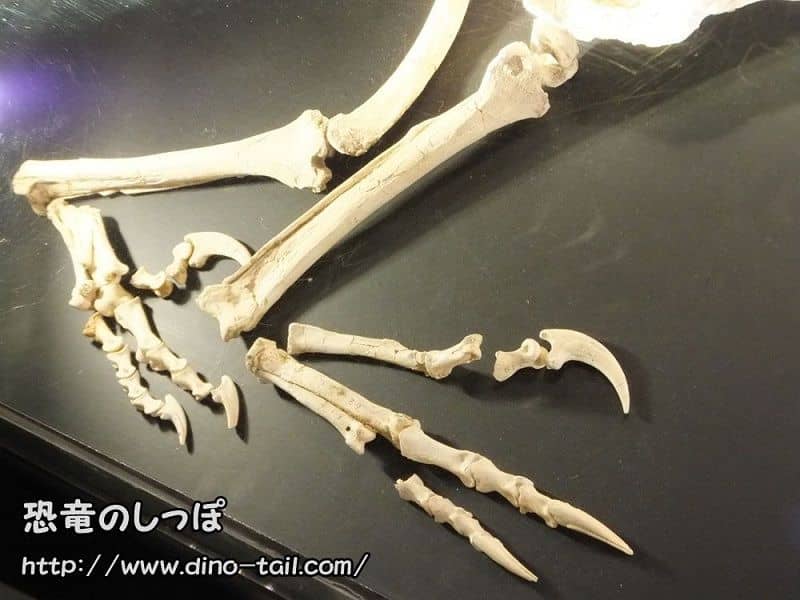
The large sickle claw on its hind foot, a symbol of the Dromaeosauridae family, was once thought to be a weapon for slashing prey. However, the prevailing theory now is the "raptor prey restraint (RPR) model," similar to modern hawks and eagles, where it pinned its prey to the ground with its sickle claws and used its wing-like forelimbs for balance while eating it alive .
It also appears to have been a scavenger as well as an agile hunter. One Protoceratops fossil had traces of being eaten by a Velociraptor, and then scavenged by other carnivores. Furthermore, the bones of a pterosaur larger than itself were found in the stomach area of a Velociraptor, suggesting a very diverse diet.
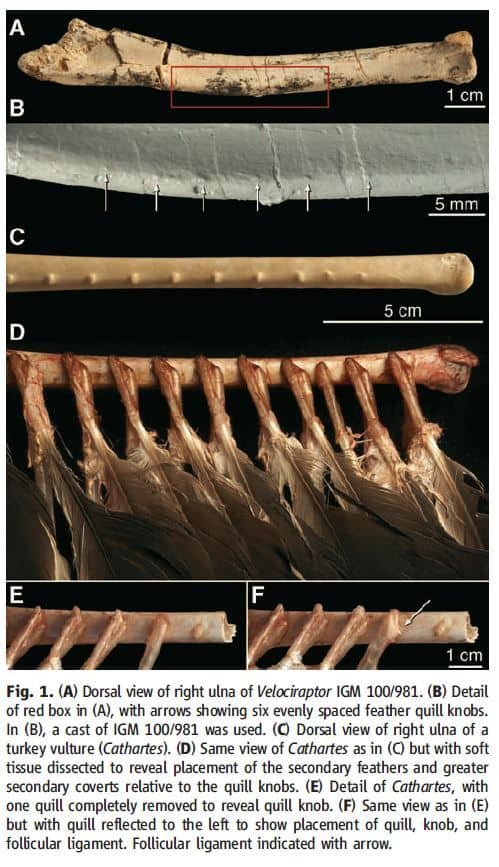
Feather Quill Knobs in the Dinosaur Velociraptor. Science - October 2007. by Alan H Turner, Peter J Makovicky, Mark A Norell.
In 2007, traces were found indicating that Velociraptor itself had feathers on its forelimbs. A paper titled "Feather Quill Knobs in the Dinosaur Velociraptor" was published in the world-renowned scientific journal Science.
In this paper, paleontologists Alan H. Turner and Mark A. Norell argued that "we have discovered a fossilized forelimb with evenly spaced bumps (called quill knobs). This shape is seen at the base of feathers and is evidence that Velociraptor had feathers."
In 2011, a paper was published suggesting that Velociraptor was nocturnal, based on the relative size of its eye socket (orbit) and sclerotic ring (a ring of bone in the orbit).
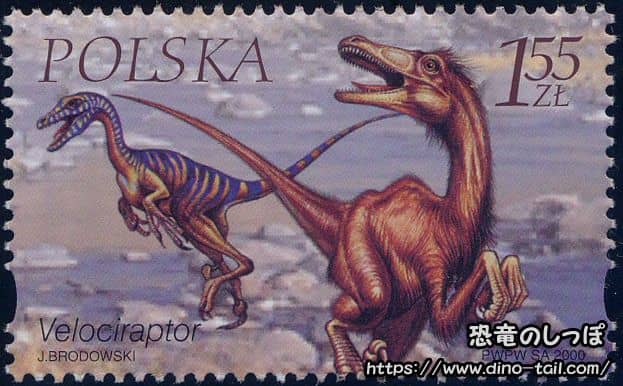
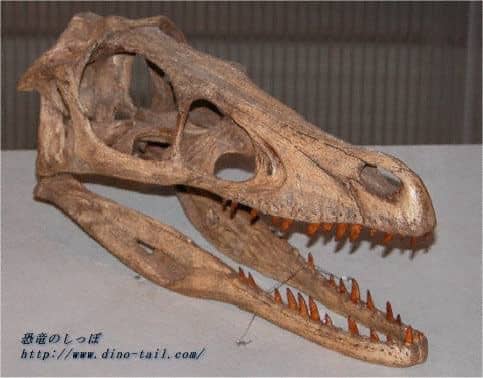
The "Fighting Dinosaurs" Fossil of Velociraptor and Protoceratops

Specimen number GIN 100/25, excavated in 1971
An interesting fossil of Velociraptor has also been discovered. It is a specimen (specimen number GIN 100/25) excavated in the Gobi Desert of Central Asia in 1971, known as the "fighting dinosaurs" fossil. It was preserved with its forelimb bitten by a Protoceratops. The hind leg of the Velociraptor is kicking the belly of the Protoceratops.
Although the circumstances of how it became fossilized in this state are unknown, it is an intriguing specimen that stimulates the imagination about what kind of situation led to such a fossil.
The original specimen is housed at the American Museum of Natural History (with ownership belonging to the Mongolian government), but a replica can be seen in Japan at the Dinosaur Center in Kanna Town, Gunma Prefecture (as of 2017).
Discovery and Publication
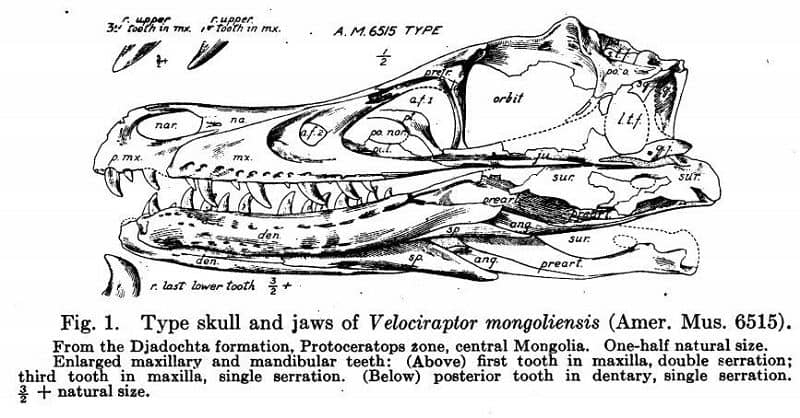
Source: Three new Theropoda, Protoceratops zone, central Mongolia. American Museum Novitates. 144. by Osborn, Henry F. 1924.
In August 1923, during an expedition to the Gobi Desert in Mongolia by the American Museum of Natural History, Peter Kaisen excavated a fossil of a claw and a skull.
In 1924, Henry Fairfield Osborn, the director of the museum, described the new genus and species Velociraptor mongoliensis, with the claw and skull fossil (specimen number AMNH 6515) as the type specimen.
During the Cold War (1946-1989), American expedition teams were unable to visit the communist country of Mongolia. During that time, Soviet and Polish scientists excavated several Velociraptor specimens in Mongolia (the aforementioned "fighting dinosaurs" fossil with Protoceratops was also excavated during this period).
As the Cold War was coming to an end, in 1990, a joint expedition by the American Museum of Natural History and the Mongolian Academy of Sciences discovered even better-preserved fossils. For example, specimen number IGM 100/980 was missing its skull, but the rest of the skeleton was almost completely intact.
Velociraptor Stamp and Fossil Gallery
